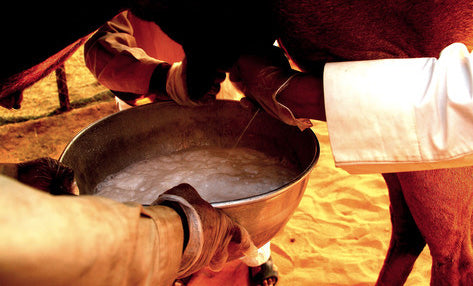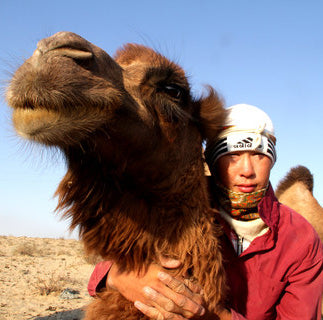Bedouins, nomads and pastoral cultures around the world have relished camel milk for a really long time. Camels are thought to have originated in North America, but somebody must have left the gate open, because they migrated to Asian and Middle Eastern countries. Maybe the food was tastier? Read more about the History of Camels in the US.



Herders have long said they survive solely on camel milk when taking the camels long distances to graze in desert and arid mountain environments. These strong people certainly throw a few dates down their throats too when they get the chance. And the camels? Well, they only need some yummy thorns, bushes, a few scant grasses and an occasional bucket of water to make a desert trip.
Camel farming traditionally takes place in desert or mountain conditions, although it has recently flourished in Germany and The Netherlands. Camel milk is now in supermarkets in Saudi Arabia, United Arab Emirates, Kenya and Mauritania, plus there’s a new chain of camel milk cafes in Dubai!
What about the U.S?
Early US demand for camel milk came from people with gut issues. Other people began using camel milk to boost their immune system and build good bacteria in their micro biome which is in fact responsible for 70% of our immune system. Cultures who appreciate camels, like ethnic communities also know about the milk. Now that US camels are producing camel milk milk for sale, “early adopters” of healthy foods are into it too.